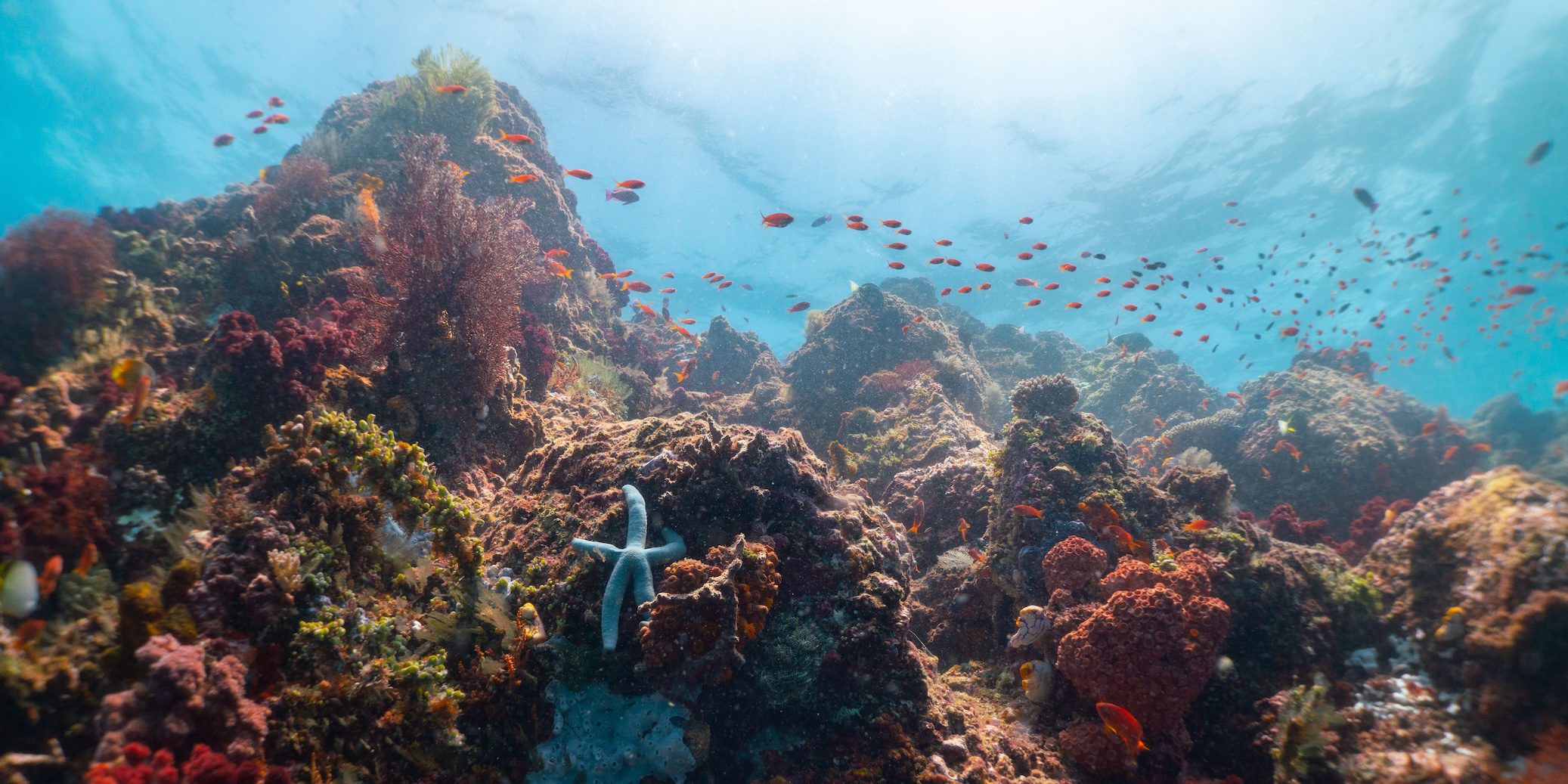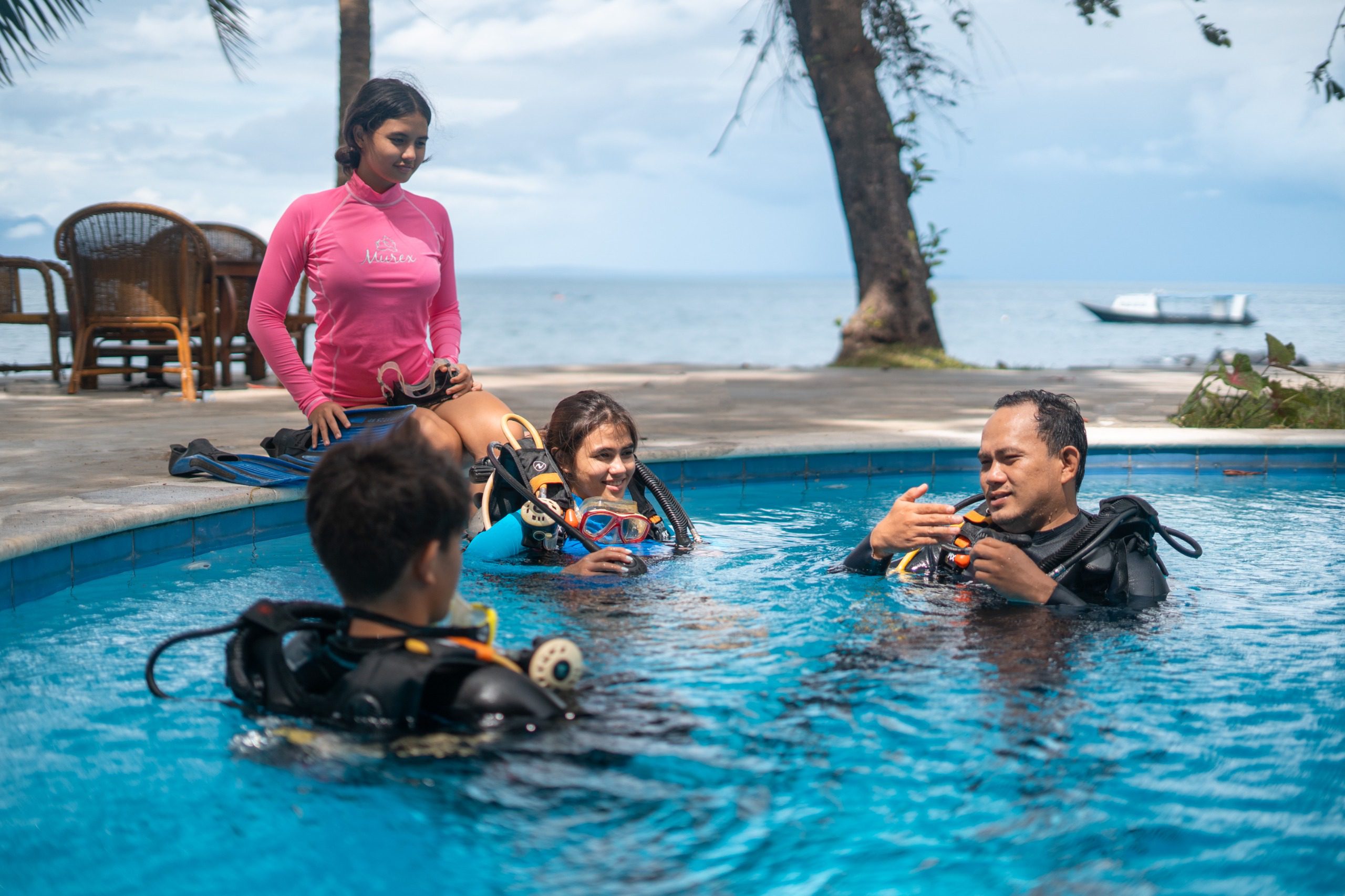
10 Steps to Improve Your Buoyancy and Gauge Your Weights for Diving
Whether you are diving the stunning walls of the Bunaken Marine Park, enjoying the drifts around Bangka Island, or photographing the incredible array of critters that North Sulawesi has to offer one thing is for sure – good buoyancy control is essential. Let’s take a look at some simple 10 steps you can take to improve your buoyancy and how to gauge if you are carrying the right amount of weight:

Good buoyancy control is essential for photographing the incredible array of critters that North Sulawesi has to offer.
1. Why be properly weighted?
The first step is to look at why you need to be correctly weighted and the issues that stem from having too much or too little weight, this will improve your buoyancy tremendously. Too much weight will pull down the lower half of your body meaning that you’ll be swimming in more of an upright position.
The most comfortable way to dive is in a horizontal (neutrally buoyant) position. This is very important for the protection of the reef too; if your fins are below you then you are more likely to kick the coral causing damage to the reef and stir up sand which will limit visibility. If you do not have enough weight you may not be able to stay down for your safety stop at the end of the dive or even worse, not able to get “under” at the beginning!
2. Breathing
Step two is to understand that as you breathe your air during a dive your tank will become more buoyant. This means that you need to carry enough weight from the start of the dive to allow for this change in tank buoyancy by the end.

Scuba diving on coral reef with proper buoyancy
3. Do a buoyancy check
Make a buoyancy check to ensure you are not over or under-weighted. Although you will feel “heavier” at the beginning of the dive compared to at the end make sure you don’t go overboard with your weights.
The best way to check this is actually at the end of the dive. After you have surfaced, with your tank at around 50 bar fully deflate your BCD and see what happens.
If you sink like a stone take a kilo off for the next dive. If you slowly descend by breathing out you are carrying the correct weight, if you cannot get down even when you try to swim down you do not have enough weight and you are probably struggling to stay down for the safety stop.
4. Dive neutrally buoyant
Now you have the correct weights you can experience the true feeling of neutral buoyancy but remember that neutral buoyancy needs maintained throughout your dive. Each time you go deeper the air in your BCD will compress meaning that you need to add more to maintain your neutral state, likewise every time you swallow up the air in your BCD will expand so you’ll need to let some out to prevent yourself from going up, up and away!
Just to further complicate things even if you stay at the same depth you will gradually gain buoyancy as you use your air and the tank becomes more buoyant.

Experience the true feeling of neutral buoyancy
5. Less can be more!
When adding or releasing air from your BCD do so in small amounts and then check your buoyancy by breathing in and out a few times to see if you rise and fall with your breathing. If you let air out of your BCD and seem to be “sinking” it may be that you have achieved neutral buoyancy but are exhaling so take a breath in to see if you rise again before adding more air.
6. Stick with your guide
Try to stay level with your Dive Guide and ask for advice. If you focus on staying at the same depth as your guide you are less likely to “lose track” of your depth and find that you have descended on ascended unintentionally.
If you do find that you are having problems ask the guide if he can see what you are doing wrong or give you advice. Our professionally trained team of Murex Dive Guides is more than happy to help improve your buoyancy!

Stay level with your Dive Guide and ask for advice
7. Awareness of other factors
Be aware of other factors that could be affecting your buoyancy or weighting. Are you wearing the same weights in the sea that you wear at home in freshwater? Are you wearing a thicker or thinner wetsuit? These factors will all need compensation.
Also, think about the dive conditions; are you ascending because you don’t have enough weight, have over-inflated your BCD or is there an up current that is causing you to rise up? Look at the direction that the reef fish are swimming in for an indication of the current direction. Reef fish generally swim head first into the drift; soft corals will also indicate current direction as they lean over much like long grass in the wind.
8. Enjoy being neutrally buoyant!
Enjoy the benefits of neutrally buoyant dives. Once you have mastered buoyancy your dives will be more comfortable, you won’t have to worry so much about what you are kicking as your fins will be behind you rather than under you, and you’ll use less air because you won’t be swimming down against an over-inflated BCD and you’ll be adding less air by adding small amounts at a time, you’ll have better “balance” in the water for taking pictures and you’ll be more streamlined for swimming – everything will be less effort and you won’t need to worry about drop-offs or walls. All in all, you’ll look like a pro!

Proper Buoyancy makes you’ll look like a pro!
9. Keep diving and improve your buoyancy
Book your next dive trip so you can keep practicing. Here in North Sulawesi, we have a diverse range of topographies so you’ll be able to perfect your skills on walls, in drift, and on sandy slopes.
If you haven’t done so already sign up for your PADI Advanced Open Water course while you are here and you’ll practice not just buoyancy but you’ll also learn about Deep Diving, Underwater Navigation and you can choose two more topics from the following: Fish Identification, Night Diving, Underwater Naturalist, Drift Diving, Underwater Photography, Search and Recovery, Nitrox Diving, Boat Diving and of course, Peak Performance Buoyancy.
10. Enjoy the trip of a lifetime here at Murex Dive Resorts and experience some of Indonesia’s best dive sites!
Dive Deeper with Murex Resorts
If you are interested in joining us please contact us on reservations@murexdive.com
If one destination is not enough then check out our Passport to Paradise page and explore three distinct dive areas in one vacation (Manado / Bunaken, Bangka, and Lembeh). This best-selling trip allows you to explore the best dive sites of Sulawesi and our friendly, professional team will be with you every dive of the way and can help you improve your buoyancy too!




